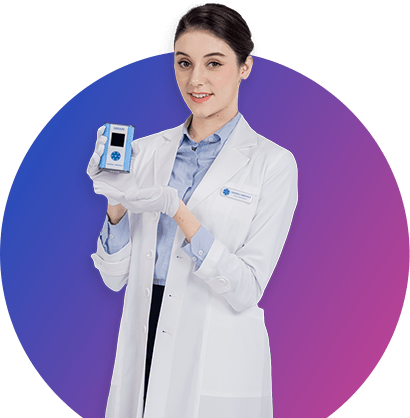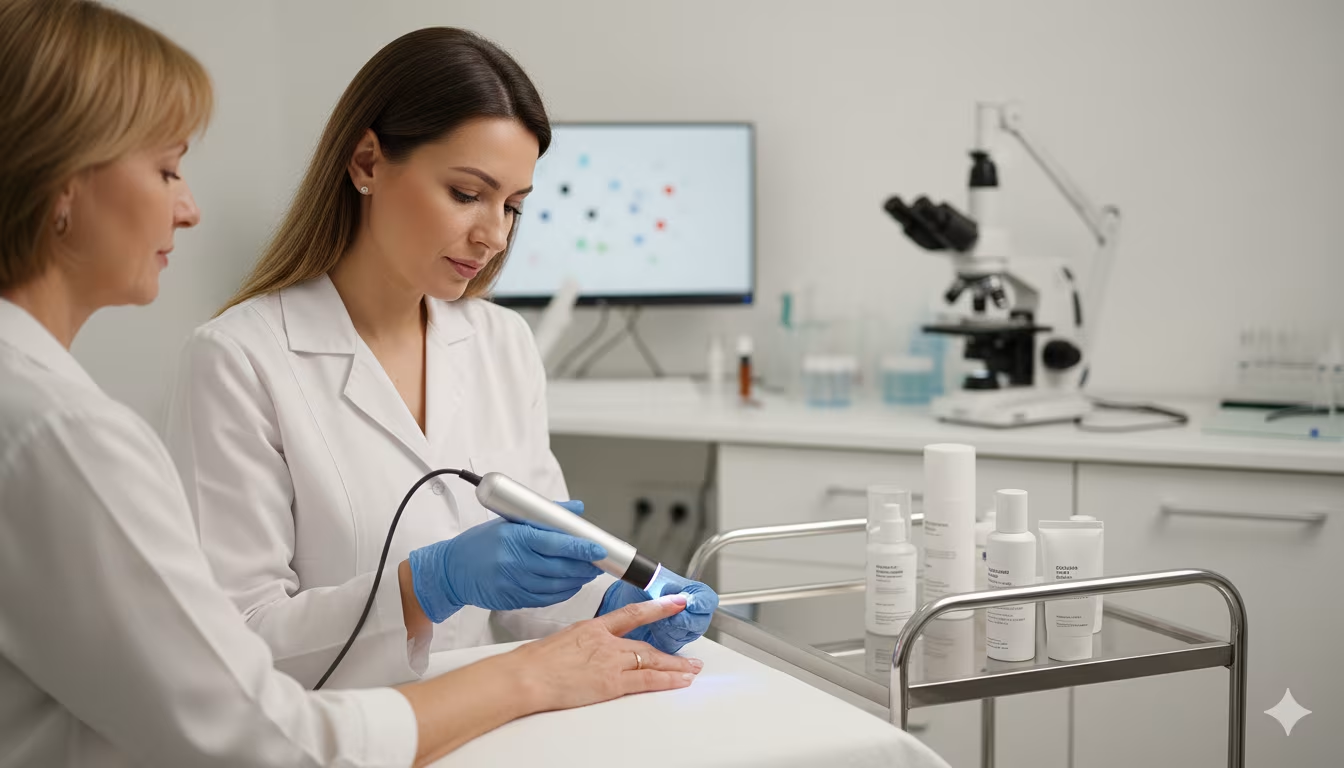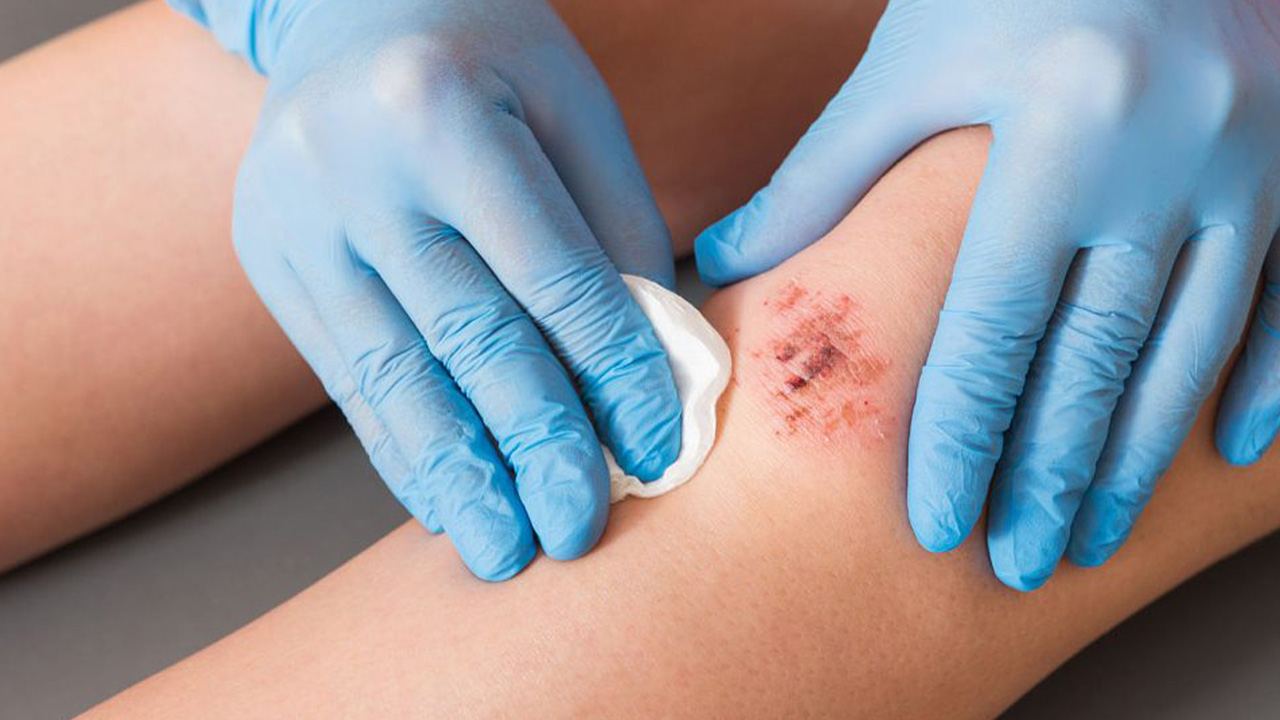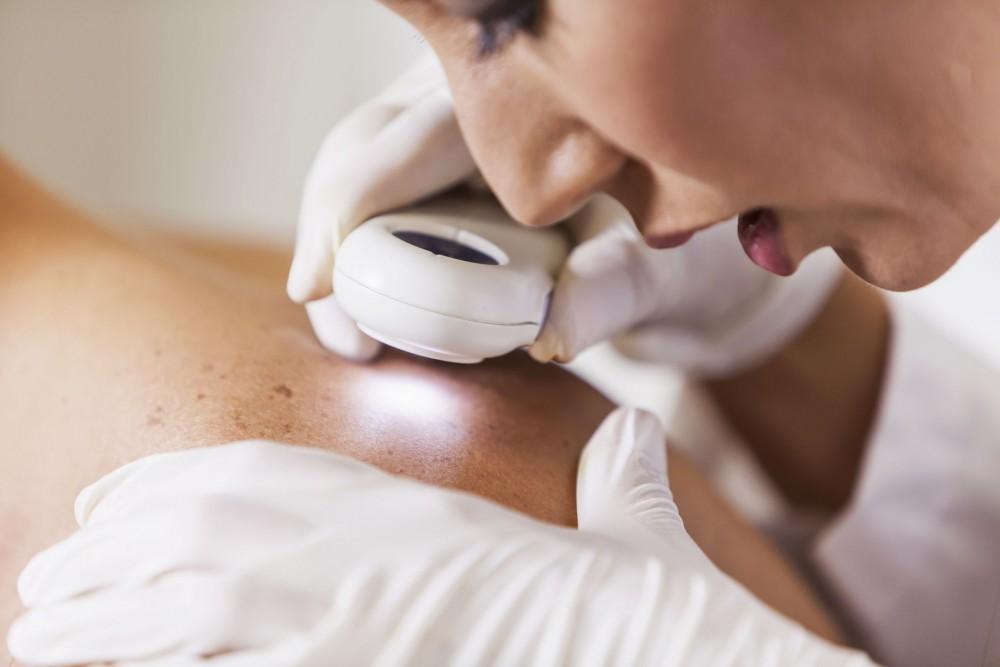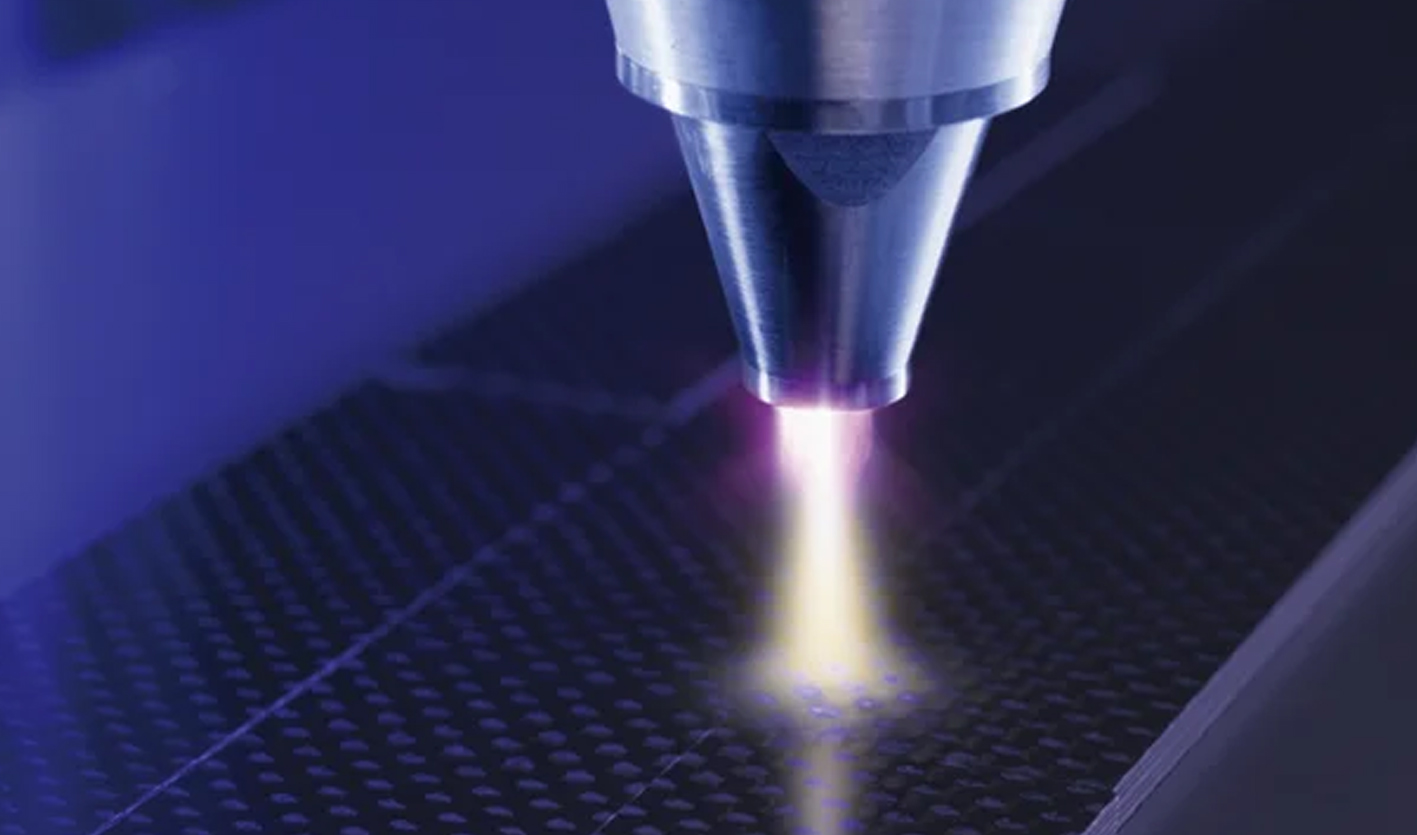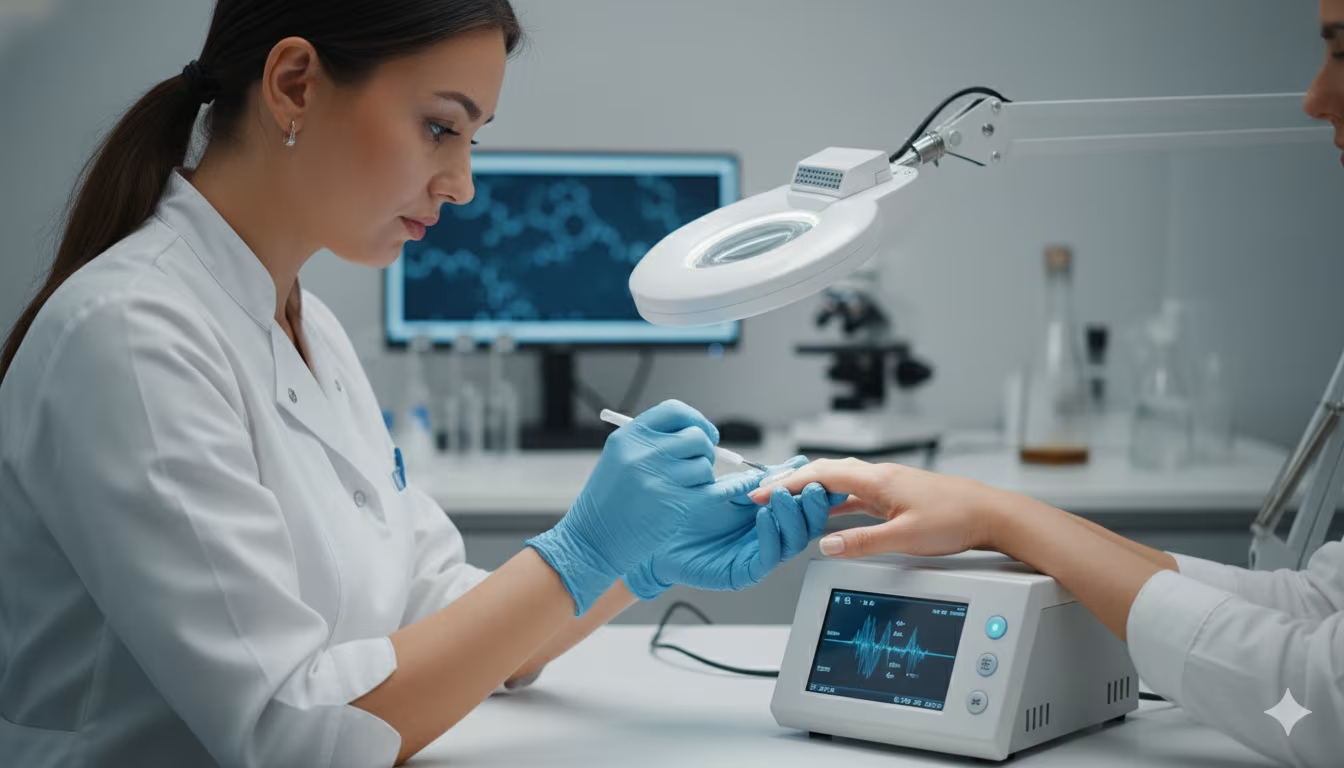
TPO in gel polish stands for trimethylbenzoyl diphenylphosphine oxide, a photoinitiator chemical that enables gel polish to cure and harden when exposed to UV or LED light.[1] While the European Union banned TPO on September 1, 2025, due to reproductive toxicity concerns based on animal studies, it remains legal and widely used in the United States, where the FDA applies a risk-based regulatory approach rather than the EU’s hazard-based precautionary principle.[2]
Understanding TPO’s role, safety profile, and the regulatory landscape helps consumers and professionals make informed decisions about gel manicure products and practices.
Understanding TPO in Gel Polish: The Basics
TPO Definition and Chemical Composition
Trimethylbenzoyl diphenylphosphine oxide, also known as diphenyl(2,4,6-trimethylbenzoyl)phosphine oxide, is a photoinitiator compound essential to gel polish formulations.[1] Identified by CAS number 75980-60-8, this organic molecule contains phosphine oxide functional groups that react specifically to light wavelengths.
The chemical structure of TPO enables it to absorb UV radiation efficiently, triggering polymerization reactions. Its molecular design includes trimethylbenzoyl groups that enhance light absorption properties, making it particularly effective for professional nail products requiring rapid curing.[3]
In cosmetic formulations, TPO serves as a critical reactive agent. When incorporated into gel polish at typical concentrations of 2-5%, it remains stable in liquid form but activates instantly under UV or LED lamp exposure.
How TPO Functions in Gel Nail Products
The photoinitiator mechanism begins when TPO molecules absorb photons during UV lamp curing or LED lamp curing. This light absorption triggers the generation of free radicals—highly reactive molecular fragments that initiate the polymerization process.[1]
The Curing Reaction Process:
- Light exposure breaks chemical bonds within TPO molecules
- Free radicals form and seek to bond with surrounding molecules
- Monomers and oligomers begin linking into polymer chains
- Cross-linking occurs, creating a three-dimensional network
- The liquid gel transforms into a solid, durable coating
TPO’s deep and even cure capabilities reduce oxygen inhibition, a common problem where atmospheric oxygen interferes with surface curing. This ensures complete polymerization throughout the gel layer, from the nail plate contact point to the glossy outer surface.[3]
Why TPO Is Used in Gel Polish Formulas
Nail technicians and manufacturers favor TPO for several performance advantages. Fast curing benefits dramatically improve salon efficiency, with complete polymerization occurring in 30-60 seconds under LED lamps compared to 2-3 minutes with older photoinitiators.[1]
| TPO Performance Benefits | Advantage |
|---|---|
| High shine finish | Creates professional glossy finish without additional top coats |
| Long-lasting durability | Maintains wear resistance for 2-3 weeks without chipping |
| Low yellowing | Preserves color accuracy in transparent and light formulations |
| Deep cure capability | Ensures complete polymerization in thick gel layers |
| Broad lamp compatibility | Works effectively with both UV and LED curing systems |
The superior performance in professional nail products made TPO the industry standard photoinitiator. Its chemical efficiency allows formulators to achieve optimal results with lower concentrations than alternative photoinitiators.[3]
While advanced plasma technologies like the Mirari Cold Plasma system are revolutionizing skin care and dermatological treatments through nitric oxide delivery, the cosmetic nail industry continues to rely on traditional photochemical curing processes.
The Science Behind Gel Polish Curing
UV Radiation and LED Light Technology
Photo-curable coatings technology relies on specific light wavelengths to activate photoinitiators. UV gel polish typically requires wavelengths between 340-380 nanometers, while LED gel polish formulations are optimized for narrower LED emission peaks around 395-405 nm.[4]
The fundamental difference between UV and LED systems lies in curing time optimization. LED lamps emit targeted wavelengths that TPO absorbs most efficiently, reducing cure times by up to 75% compared to traditional UV lamps.
Acrylate polymerization chemistry forms the foundation of gel polish hardening. When photoinitiators generate free radicals, these reactive species attack the carbon-carbon double bonds in acrylate monomers, creating chain reactions that build polymer networks.
The Hardening Process Step-by-Step
Initial gel nail application requires careful technique to ensure even coverage without flooding the cuticle area. Thin layers (0.5-1mm) cure most effectively, as thicker applications may experience incomplete polymerization in deeper layers.
Polymerization Sequence:
- Application of base coat with photoinitiators
- Light exposure activating photoinitiators (10-30 seconds)
- Polymer chain formation begins at molecular level
- Color coat application and curing (30-60 seconds)
- Top coat application for final hardening process
- Complete cross-linking creates durable finish
The polymer chain formation occurs in milliseconds once free radicals generate. Cross-linking between polymer chains creates a three-dimensional matrix that provides the characteristic hardness and flexibility of cured gel polish.[4]
TPO Performance Characteristics
- Gel polish formula stability depends significantly on photoinitiator selection. TPO demonstrates excellent shelf stability, remaining effective for 12-24 months when stored properly away from light and heat.
- Nail modeling products applications extend beyond traditional polish to include gel extensions, builder gels, and sculptured nail systems. TPO’s effectiveness in thick applications makes it valuable across professional nail product categories.
- Compared to other photoinitiators like camphorquinone or BAPO, TPO offers superior cure depth and minimal yellowing. However, these advantages come with the reproductive toxicity concerns that prompted the EU ban.[2]
- For professionals interested in emerging wellness technologies, Mirari Doctor offers insights into how advanced atmospheric pressure plasma systems are transforming therapeutic applications through controlled nitric oxide delivery.
EU Ban on TPO: Regulatory Background
European Union Classification and Restrictions
The CMR Category 1B substance designation places TPO among chemicals presumed toxic for human reproduction based on animal evidence.[2] This classification triggered automatic prohibition under European Cosmetics Regulation EC No. 1223/2009.
Commission Regulation EU 2025/877 added TPO to Annex II of prohibited substances, implementing the seventh CMR Omnibus update. The European Cosmetics Regulation framework operates on the precautionary principle, restricting substances with potential hazards even when actual human risk remains unproven.
The September 2025 ban date implementation occurred without transition periods. From September 1, 2025, manufacturers cannot place TPO-containing products on the market, retailers cannot sell existing inventory, and salon professionals cannot use TPO products for services.[5]
Scientific Evidence Behind the Ban
Animal studies findings on reproductive toxicity formed the primary evidence basis. Rodent studies involving high oral doses demonstrated testicular abnormalities and decreased sperm counts in male rats exposed to TPO for extended periods.[2]
Key Study Parameters:
- Oral administration at doses far exceeding cosmetic exposure levels
- Continuous exposure over multiple reproductive cycles
- Testicular tissue changes at doses above 100 mg/kg body weight
- No human studies demonstrating similar effects
- Topical exposure not adequately assessed in animal models
The carcinogenic substance classification criteria under CLP Regulation (EC) No 1272/2008 categorize chemicals based on hazard strength. Category 1B applies when animal evidence strongly suggests human reproductive harm is presumed.[5]
The European Chemicals Agency risk assessment, completed in 2021, upgraded TPO from Category 2 (suspected reproductive toxicant) to Category 1B (presumed reproductive toxicant). This reclassification mandated inclusion on the prohibited ingredients list under cosmetics regulations.
Immediate Impact on EU Nail Industry
Professional use restrictions created immediate challenges for nail salons across 27 EU member states plus Norway and Switzerland. The ban extends beyond retail sales to professional applications, unlike previous restrictions on ingredients like HEMA that only affected consumer products.[5]
Salon inventory disposal requirements forced businesses to discard existing TPO-containing stock with no grace period. Unlike typical regulatory transitions allowing product sellthrough, the September 1 effective date prohibited any marketing, sale, or professional use immediately.
The gel manicure industry adaptation required rapid reformulation. Major brands including OPI, CND, and Gelish invested significant resources developing TPO-free alternatives to maintain EU market access while managing global supply chains.[2]
TPO Safety Concerns and Health Context
Reproductive Toxicity Research
- Animal studies methodology involved administering TPO through oral gavage—forcing rodents to ingest doses vastly exceeding any human cosmetic exposure. Male fertility effects in rodent studies appeared at doses of 100-300 mg/kg body weight daily for weeks.[2]
- To contextualize these doses: a 70 kg (154 lb) human would need to ingest 7,000-21,000 mg of pure TPO daily to match rodent study exposures. Typical gel manicure exposure involves trace topical contact during application, with minimal absorption through intact nail plates (dead keratinized cells).
- Testicular abnormalities findings included reduced sperm production, altered testicular histology, and hormonal changes. However, these effects occurred only at high doses through oral routes—a scenario irrelevant to cosmetic nail product use.
- The critical distinction between topical exposure vs oral ingestion cannot be overstated. Skin absorption rates for TPO remain minimal, and after UV/LED curing, TPO undergoes chemical transformation, with extractable amounts dropping below 0.2 parts per million.[3]
Real-World Human Exposure Levels
The Cosmetic Ingredient Review (CIR) assessment concluded that TPO at typical concentration levels (≤5% in gel polish) poses minimal safety concerns when used as intended.[3] Professional application techniques minimize skin contact, and proper curing eliminates reactive free radical formation.
Exposure Comparison Table:
| Exposure Scenario | TPO Amount | Absorption Route | Risk Level |
|---|---|---|---|
| Animal study (oral) | 100+ mg/kg daily | Gastrointestinal | Reproductive effects observed |
| Gel manicure (typical) | <50 mg total topical | Minimal dermal | Below detection limits after cure |
| Nail technician (weekly) | <500 mg cumulative | Brief dermal contact | Well below safety threshold |
| Cured gel polish | <0.2 ppm extractable | None (polymerized) | Negligible |
Post-cure extractable amounts represent the critical safety metric. Once polymerization completes, TPO molecules incorporate into polymer chains, becoming chemically bound and unavailable for absorption.[3]
Minimal risk from nail plate contact reflects anatomical reality. The nail plate consists of dead, keratinized cells that don’t absorb chemicals into the bloodstream. Any TPO exposure occurs primarily during liquid gel application to surrounding skin—exposure lasting seconds before curing.
Sensitizing molecules considerations matter more for allergic contact dermatitis than systemic toxicity. Some individuals may develop skin sensitivity to uncured acrylates, though TPO itself shows low allergenic potential compared to HEMA or other gel components.
Hazard-Based vs Risk-Based Regulation
The EU precautionary principle approach bans substances based on intrinsic hazard properties regardless of actual exposure levels. If animal studies demonstrate potential harm at any dose, the substance faces restriction.[2]
The US FDA risk assessment methodology evaluates real-world exposure scenarios, considering dose, duration, and absorption routes. Under this framework, TPO remains acceptable because actual cosmetic use doesn’t approach doses causing animal study effects.
Actual exposure scenarios in gel manicures involve:
- Brief topical contact during application (5-10 minutes maximum)
- Minimal absorption through intact skin barriers
- Complete chemical transformation during curing
- No ingestion or inhalation routes
- Infrequent exposure intervals (every 2-3 weeks)
The scientific debate within cosmetic community centers on appropriate regulatory balance. Industry scientists argue that hazard-based bans may eliminate safe products, while consumer advocates favor precautionary restrictions that minimize any theoretical risk.[6]
Caroline Rainsford, Director of Science at the UK’s Cosmetic, Toiletry and Perfumery Association, noted: “The amount of this ingredient used in nail products is over a thousand times less than the amount which could have any negative effect on fertility.”[5]
TPO Status in the United States
Current US Regulatory Position
- FDA cosmetics oversight operates under the Federal Food, Drug, and Cosmetic Act (FD&C Act), specifically 21 CFR 700.11 addressing prohibited and restricted ingredients.[7] Currently, TPO faces no ban or restrictions on its use in American salons.
- The Modernization of Cosmetics Regulation Act of 2022 (MoCRA) updated FDA authority over cosmetics but didn’t prohibit TPO. Instead, MoCRA focuses on facility registration, product listing, adverse event reporting, and good manufacturing practices.[7]
- Continued legal use in American salons reflects the risk-based regulatory philosophy. The FDA evaluates whether ingredients pose actual safety risks under intended use conditions rather than banning substances with theoretical hazards identified in extreme experimental scenarios.
US vs EU Regulatory Differences
Global market divergence creates complex challenges for international beauty brands. Companies serving both markets must maintain dual inventory systems—TPO-free formulations for Europe and conventional products for the Americas.[2]
Regulatory Framework Comparison:
- EU Approach: Ban substances with any animal evidence of harm (hazard-based)
- US Approach: Evaluate real-world human exposure and risk (risk-based)
- EU Timeline: Rapid ban implementation with no transition periods
- US Timeline: Extended review processes with industry input
- EU Philosophy: Precautionary principle prioritizes theoretical safety
- US Philosophy: Scientific evidence of actual human risk required for restriction
Consumer awareness trends show a 65% surge in TPO-free searches among US consumers following EU ban announcements.[8] Despite no US regulatory requirements, market demand increasingly favors TPO-free alternatives.
Industry compliance challenges include reformulation costs, supply chain adjustments, and consumer education. Brands must balance regulatory requirements, performance expectations, and marketing positioning across different global markets.
Should US Consumers Be Concerned?
Expert dermatologist opinions consistently emphasize safety when used as intended. Dr. Bill Dobos, cosmetic scientist at the University of Cincinnati, explained that TPO “starts that reaction that gets it to cure” without presenting meaningful exposure risks to consumers or professionals.[2]
Proper curing eliminating exposure risk represents the critical safety factor. When gel polish undergoes complete polymerization under UV/LED lamps, TPO transforms chemically and becomes permanently bound within the polymer matrix.
Evidence-based risk assessment for topical use considers:
- Minimal dermal absorption rates
- Brief exposure duration during application
- Complete chemical transformation during curing
- Massive dose differences between animal studies and cosmetic use
- Decades of use without documented human reproductive harm
While innovations in medical aesthetics like the Mirari Cold Plasma Device demonstrate how advanced technologies can deliver therapeutic benefits through controlled mechanisms, traditional cosmetic applications like gel polish present minimal systemic exposure concerns when applied correctly.
TPO-Free Alternatives and Innovations
Alternative Photoinitiators Overview
- TPO-L (ethyl trimethylbenzoyl phenylphosphinate) serves as the primary replacement photoinitiator in reformulated gel polishes.[3] Its similar chemical structure provides comparable curing performance without the reproductive toxicity classification.
- BAPO (bis-acylphosphine oxide) formulations offer another effective alternative. BAPO demonstrates excellent cure speeds and depth, though it costs approximately 30% more than TPO, contributing to price increases in reformulated products.
- Camphorquinone (CQ) options represent older photoinitiator technology primarily used in dental composites. While effective, CQ produces yellowing in clear formulations, limiting its application in transparent or light-colored gel polishes.
Alternative Photoinitiator Comparison:
| Photoinitiator | Curing Speed | Yellowing | Cost vs TPO | Regulatory Status |
|---|---|---|---|---|
| TPO-L | Fast (equivalent) | Minimal | +15-25% | EU approved, US legal |
| BAPO | Very fast | Minimal | +25-35% | EU approved, US legal |
| Camphorquinone | Moderate | Significant | Similar | EU approved, US legal |
| Irgacure 819 | Fast | Low | +20-30% | EU approved, US legal |
| ITX | Fast | Moderate | +15-20% | EU approved, US legal |
Irgacure 819 and ITX photoinitiator alternatives provide additional formulation options. Benzoyl peroxide systems work through different mechanisms but require longer cure times and show limited compatibility with colored pigments.[3]
TPO-L: The Leading Replacement
- Structural modifications reducing toxicity involve replacing a benzene ring with an ethoxy group in TPO-L’s molecular structure. This seemingly minor change dramatically alters the compound’s biological activity and toxicity profile.[3]
- The ethoxy group replacing benzene ring modification enhances molecular stability while reducing reactivity with biological tissues. This structural difference explains why TPO-L doesn’t trigger the same reproductive toxicity concerns in animal studies.
- TPO-L demonstrates a lower reactivity profile compared to TPO, requiring slightly adjusted formulation concentrations. However, its comparable curing performance means consumers notice no difference in application, cure time, or final polish quality.
- Safety profile improvements position TPO-L as the sustainable long-term replacement. EU regulatory approval confirms its acceptability under current cosmetic safety standards, while its chemical similarity to TPO allows manufacturers to reformulate without complete formula redesign.
Performance Comparison of Alternatives
- Curing efficiency analysis reveals that TPO-L performs virtually identically to TPO under both UV and LED lamps. Independent laboratory testing shows cure completion times within 5-10% of TPO-based formulations.[3]
- Long-term color stability benefits actually favor some TPO alternatives. BAPO-based formulations demonstrate superior color retention over time, with reduced yellowing compared to TPO in longitudinal studies.
- Bio-sourced formula innovations represent emerging trends in sustainable cosmetics. Some manufacturers explore plant-derived photoinitiator precursors, though these remain in development stages with limited commercial availability.
- HEMA-free gel polish combinations address multiple sensitization concerns simultaneously. Combining TPO-free formulations with HEMA-free chemistry creates products suitable for individuals with multiple chemical sensitivities or allergies.
How to Identify TPO in Gel Polish Products
Reading INCI Ingredient Labels
Trimethylbenzoyl Diphenylphosphine Oxide identification requires checking the INCI (International Nomenclature of Cosmetic Ingredients) list on product packaging. TPO may appear under several names:
- Trimethylbenzoyl Diphenylphosphine Oxide
- Diphenyl(2,4,6-trimethylbenzoyl)phosphine oxide
- Phosphine oxide, diphenyl(2,4,6-trimethylbenzoyl)-
- CAS number 75980-60-8
CAS number 75980-60-8 reference provides the most reliable identification method. Unlike common names that vary, CAS numbers uniquely identify specific chemical compounds across all languages and regulatory systems.
Ingredient list placement follows descending concentration order. Photoinitiators typically appear in the middle to lower portions of ingredient lists, reflecting their 2-5% typical concentrations.
Regulatory labeling requirements in the US don’t mandate ingredient disclosure for professional-only products, creating information gaps. Consumer gel polish kits must list all ingredients, but salon-exclusive professional products often lack complete INCI listings.
TPO-Free Product Certification
- Brand disclosure practices vary significantly across manufacturers. Leading brands now prominently market TPO-free status, while smaller manufacturers may not proactively disclose photoinitiator choices.
- Marketing claims verification requires scrutiny. Terms like “safe,” “clean,” or “non-toxic” lack regulatory definitions. Only specific claims like “TPO-free” or “does not contain trimethylbenzoyl diphenylphosphine oxide” provide verifiable information.
- Professional vs consumer product labeling creates two-tiered transparency. Consumer products face stricter disclosure requirements, while professional products marketed exclusively to licensed technicians face fewer labeling mandates.
- Third-party testing certifications remain limited in the cosmetics industry. Unlike food or supplements, cosmetic products rarely undergo independent ingredient verification, requiring consumers to trust manufacturer claims.
Popular TPO-Free Gel Polish Brands (US Market)
Several major brands have reformulated their gel polish lines to eliminate TPO, even in the absence of US regulatory requirements:
TPO-Free Brand Options:
- OPI Intelli-Gel system: Reformulated in 2025 for global compliance
- Aprés Nail formulations: TPO-free across entire product line
- Zoya gel polish lines: Marketing emphasizes “clean” formula positioning
- Ella+Mila products: Vegan, cruelty-free, and TPO-free certification
- Bio Sculpture options: European brand with longstanding TPO-free commitment
- GND Canada alternatives: TPO-free and HEMA-free combination formulas
Consumers seeking advanced dermatology treatments for skin health alongside cosmetic enhancements may explore how emerging technologies address both aesthetic and therapeutic concerns through evidence-based mechanisms.
Safe Gel Manicure Practices
Professional Application Best Practices
Avoiding skin contact during application represents the most critical safety practice. Skilled technicians apply gel polish precisely to the nail plate without flooding the cuticle area or touching surrounding skin.[1]
Application Safety Guidelines:
- Prep nails with gentle buffing, avoiding aggressive filing
- Apply thin, even coats to prevent incomplete curing
- Keep gel polish away from cuticles and skin
- If skin contact occurs, immediately remove uncured product
- Cure each layer for manufacturer-recommended duration
- Verify complete polymerization before proceeding
Proper gel polish formula application technique requires understanding product viscosity and lamp compatibility. Thicker formulas need longer cure times, while thin formulas may require additional coats for adequate coverage.
Correct UV/LED lamp usage means verifying lamp wattage matches product requirements. Underpower lamps cause incomplete curing, leaving reactive chemicals available for skin exposure.
Adequate curing for complete polymerization eliminates safety concerns associated with uncured acrylates and photoinitiators. When the sticky inhibition layer disappears and the polish surface becomes tack-free, polymerization is complete.
UV/LED Lamp Safety Considerations
Skin cancer risk from UV radiation exposure warrants attention separate from chemical safety concerns. While gel polish curing lamps emit less UV radiation than outdoor sun exposure, repeated exposure accumulates over time.[4]
DNA damage and premature aging concerns prompted dermatological recommendations for protective measures. UVA wavelengths used in nail lamps penetrate deep into skin, potentially causing photoaging and, theoretically, increasing skin cancer risk.
UV Protection Strategies:
- Apply broad-spectrum sunscreen (SPF 30+) to hands 20 minutes before gel manicure
- Use fingerless UV protection gloves during curing
- Reapply sunscreen after hand washing before salon visit
- Consider LED-only lamps (lower UV output, faster cure times)
- Limit gel manicure frequency to every 3-4 weeks
Sunscreen application before curing provides simple, effective protection. Water-resistant formulations prevent removal during hand washing immediately before nail services.
LED lamp benefits extend beyond speed. LED systems emit primarily visible blue-violet light with minimal UVA and virtually no UVB radiation, reducing photoaging concerns while maintaining excellent curing performance.
Nail Health Maintenance
Preventing brittleness and thinning requires understanding the mechanical stress gel removal creates. Aggressive scraping, improper removal techniques, and excessive filing cause more nail damage than gel polish itself.[4]
Proper removal techniques avoiding damage include:
- Soaking removal wraps for full 10-15 minutes
- Gentle sliding motion to remove softened gel
- No forcing or aggressive scraping
- Buffing only the surface, never aggressive filing
- Moisturizing after removal
Rest periods between gel manicures allow natural nail recovery. Dermatologists recommend 2-3 week breaks every 8-12 weeks of continuous gel wear to prevent cumulative nail plate thinning.
Protective base coat usage prevents direct adhesion to the natural nail plate. Quality base coats create a barrier layer that facilitates easier removal while protecting the keratin structure.
Similar to how advanced wound healing technologies support tissue repair through controlled biological mechanisms, proper nail care practices support keratin health through protective strategies and adequate recovery periods.
Consumer Decision-Making Guide
When to Choose TPO-Free Products
- Personal risk tolerance assessment guides individual choices. Consumers who prefer precautionary approaches may choose TPO-free products despite limited evidence of actual human risk from proper gel polish use.
- Pregnancy and reproductive health considerations warrant extra caution. While evidence doesn’t demonstrate risk from topical gel polish exposure, pregnant women or couples actively trying to conceive may prefer eliminating any theoretical reproductive exposures.
- Frequency of gel manicure use influences cumulative exposure. Individuals getting gel manicures weekly face higher exposure than those maintaining 3-4 week intervals, though exposure remains minimal even with frequent applications.
- Precautionary approach preferences reflect personal values and risk philosophies. No scientific consensus declares TPO unsafe at cosmetic exposure levels, but individuals may still prefer avoiding substances with any toxicity concerns.
Questions to Ask Your Nail Technician
Effective communication with nail professionals ensures informed service decisions:
Essential Questions:
- “Are the gel polishes you use TPO-free?”
- “Which photoinitiator does your gel polish contain?”
- “How do you ensure complete curing?”
- “What precautions do you take to avoid skin contact during application?”
- “Are your UV/LED lamps maintained and calibrated properly?”
Salon product ingredient inquiries may require advance notice. Many technicians don’t memorize ingredient lists but can check product labels or contact manufacturers for specific information.
TPO-free options availability varies by salon. High-end salons in major metropolitan areas more commonly stock reformulated products, while smaller establishments may use existing inventory until depleted.
Proper application and curing protocols matter more than specific photoinitiator selection for safety. Even TPO-containing products present minimal risk when applied correctly with adequate curing.
Cost and Availability Factors
Price premiums for TPO-free formulations typically range from 15-25% markup compared to conventional gel polishes.[8] Reformulation costs, new raw materials, and performance testing contribute to higher pricing.
Salon adoption rates in major US cities show accelerating transitions to TPO-free products. Despite no regulatory requirement, consumer demand and proactive risk management drive voluntary reformulation.
Market Availability by Region (2025):
| Region | TPO-Free Availability | Average Price Premium |
|---|---|---|
| Major metro areas | 70-85% of salons | 15-20% |
| Suburban locations | 50-65% of salons | 20-25% |
| Rural areas | 25-40% of salons | 25-30% |
| At-home kits (online) | 60-75% of brands | 15-25% |
At-home gel kit options increasingly feature TPO-free formulations as major brands reformulate entire product lines rather than maintaining separate conventional and TPO-free SKUs.
Product accessibility and selection continue improving as reformulation becomes industry standard. Major manufacturers project complete transitions to TPO-free formulas by late 2026, driven by global market harmonization rather than US regulatory pressure.
Future of Gel Polish Formulations
Industry Innovation Trends
- Safer photoinitiator development extends beyond simple TPO replacement. Researchers explore novel compounds with improved safety profiles, reduced sensitization potential, and enhanced environmental sustainability.
- Bio-sourced and sustainable ingredients represent growing priorities. Plant-derived photoinitiator precursors, biodegradable polymers, and renewable raw materials align cosmetic chemistry with environmental sustainability goals.
- Improved performance formulations focus on extending wear time, enhancing color vibrancy, and simplifying removal. Next-generation gel polishes may feature “smart” polymers that maintain strong adhesion during wear but soften readily during removal.
- Reduced sensitization potential addresses allergic contact dermatitis concerns beyond TPO. Eliminating HEMA, minimizing methacrylates, and developing hypoallergenic formulations create products suitable for sensitive individuals.
Potential US Regulatory Changes
- FDA monitoring of EU developments suggests possible future restrictions, though no immediate action is expected. The agency’s risk-based philosophy typically requires evidence of actual human harm before implementing bans.
- Consumer advocacy pressure from environmental health organizations like the Environmental Working Group encourages FDA to reevaluate cosmetic ingredients. However, regulatory change requires substantial scientific evidence and formal rulemaking processes.
- Industry self-regulation initiatives may preempt government mandates. Trade associations like the Personal Care Products Council encourage members to adopt safety best practices and transparent ingredient disclosure.
- Long-term safety data requirements under MoCRA may eventually require manufacturers to demonstrate ingredient safety proactively rather than responding to emerging concerns reactively.[7]
Global Harmonization Outlook
- UK ban timeline projects implementation in 2026-2027, following Brexit-related regulatory independence.[5] The UK typically aligns with EU cosmetic standards but implements changes on delayed schedules.
- Other countries following EU precedent include Switzerland, Norway (through EEA agreements), and Morocco, which implemented TPO restrictions in September 2025.[2]
- International cosmetic standards convergence faces challenges from divergent regulatory philosophies. The US favors risk-based assessment while the EU emphasizes hazard-based precaution, creating persistent regulatory divergence.
- Morocco and other markets adopting restrictions reflect EU regulatory influence beyond official membership. Countries seeking European market access often harmonize cosmetic standards to facilitate trade.
- The evolution of cosmetic safety parallels advances in medical device regulation, where technologies like those highlighted at [miraridoctor.com] demonstrate how evidence-based assessment balances innovation with appropriate safety oversight.
Key Takeaways: What You Need to Know
- TPO remains fully legal in the United States with no current FDA restrictions or ban timeline
- The EU ban reflects precautionary regulation based on animal studies using extreme doses irrelevant to cosmetic exposure
- Properly cured gel polish contains less than 0.2 ppm extractable TPO, presenting negligible human exposure
- TPO-free alternatives like TPO-L deliver equivalent performance without reproductive toxicity classification
- Personal choice should consider individual risk tolerance, frequency of use, and reproductive health status
- Professional application technique and complete curing matter more for safety than specific photoinitiator selection
- Price premiums of 15-25% reflect reformulation costs as industry transitions voluntarily to TPO-free formulas
Frequently Asked Questions
Is TPO in gel polish dangerous to my health?
Current scientific evidence indicates TPO poses minimal health risks when used in gel polish as intended. The EU ban stems from animal studies involving oral doses thousands of times higher than cosmetic exposure. Properly cured gel polish contains negligible extractable TPO, and topical contact during application lasts only seconds with minimal skin absorption.
Why is TPO banned in Europe but not in the United States?
The regulatory difference reflects contrasting approaches: the EU applies a hazard-based precautionary principle that bans substances with any animal toxicity evidence, while the US FDA uses risk-based assessment evaluating actual human exposure scenarios. Since real-world gel manicure exposure differs vastly from animal study conditions, the FDA hasn’t restricted TPO.
How can I tell if my gel polish contains TPO?
Check the INCI ingredient list on product packaging for “Trimethylbenzoyl Diphenylphosphine Oxide,” “Diphenyl(2,4,6-trimethylbenzoyl)phosphine oxide,” or CAS number 75980-60-8. Consumer gel polish kits must list ingredients, though professional salon products may lack complete disclosure. Contact manufacturers directly for definitive confirmation of photoinitiator composition.
Are TPO-free gel polishes as effective as regular gel polish?
Yes, TPO-free alternatives like TPO-L deliver equivalent performance in curing speed, durability, shine, and wear resistance. Independent testing shows cure times within 5-10% of TPO formulations, with some alternatives offering improved long-term color stability. Consumers typically notice no difference in application or final results between TPO and TPO-free products.
Should I stop getting gel manicures because of TPO concerns?
For most individuals, continuing gel manicures poses minimal risk when proper application and curing procedures are followed. Pregnant women or those with specific reproductive health concerns may prefer TPO-free products as a precautionary measure. Focus on complete curing, minimal skin contact, and UV protection rather than solely photoinitiator type.
What is the difference between TPO and TPO-L?
TPO-L (ethyl trimethylbenzoyl phenylphosphinate) features a modified molecular structure where an ethoxy group replaces a benzene ring found in TPO. This structural change reduces biological reactivity and eliminates reproductive toxicity concerns while maintaining similar photochemical curing properties. TPO-L serves as the primary TPO replacement in reformulated gel polishes globally.
Can TPO exposure affect pregnancy or fertility?
Animal studies showing fertility effects involved oral doses vastly exceeding any human cosmetic exposure. No human studies demonstrate reproductive harm from topical gel polish use. Pregnant women may choose TPO-free products as a precautionary measure, though evidence doesn’t indicate significant risk from occasional gel manicures with proper application techniques.
Will the US ban TPO in the future?
No immediate US ban is expected. The FDA’s risk-based regulatory approach requires evidence of actual human harm before implementing restrictions. While the agency monitors international developments and consumer concerns, TPO’s three-decade use history without documented human reproductive harm makes near-term restrictions unlikely absent new scientific evidence.
References
- Cosmetic Ingredient Review. (2024). Safety Assessment of TPO in Cosmetics. https://www.cir-safety.org
- European Commission. (2025). TPO in Nail Products – Questions & Answers. https://single-market-economy.ec.europa.eu/sectors/cosmetics/tpo-nail-products-questions-answers_en
- Scientific Committee on Consumer Safety. (2025). Opinion on Trimethylbenzoyl Diphenylphosphine Oxide. European Commission. https://health.ec.europa.eu/scientific-committees/scientific-committee-consumer-safety-sccs_en
- American Academy of Dermatology. (2024). Nail Health and UV Exposure. https://www.aad.org/public/everyday-care/nail-care-secrets
- Cosmetics Business. (2025). European Union bans popular gel nail polish ingredient TPO. https://cosmeticsbusiness.com/european-union-bans-popular-ingredient-tpo
- Environmental Working Group. (2025). EWG’s Skin Deep® Cosmetics Database. https://www.ewg.org/skindeep/
- U.S. Food and Drug Administration. (2025). Modernization of Cosmetics Regulation Act of 2022 (MoCRA). https://www.fda.gov/cosmetics/cosmetics-laws-regulations/modernization-cosmetics-regulation-act-2022-mocra
- Professional Beauty Association. (2025). Industry Impact of TPO Reformulation. https://www.probeauty.org
Related articles
Made in USA
